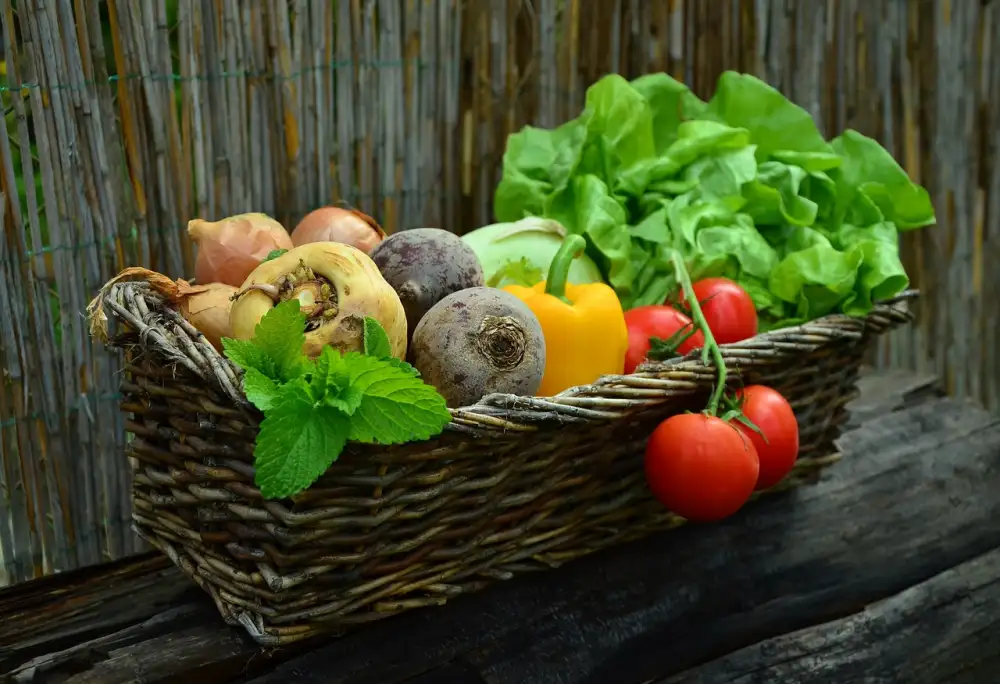When to Harvest Rhubarb: A Guide to Picking the Perfect Stalks for Your Home Garden

Rhubarb, with its vibrant red stalks and tart flavor, is a versatile and delicious addition to any home garden. But knowing when and how to harvest this perennial vegetable is key to enjoying its full potential. In this guide, we will explore the ins and outs of rhubarb harvesting, from understanding its growth cycle to picking the perfect stalks at the right time. So grab your gardening gloves and get ready to delve into the world of rhubarb harvesting!
Understanding Rhubarb Growth Cycle
To successfully harvest rhubarb, it's important to have a good understanding of its growth cycle. Rhubarb is a perennial plant that goes through distinct stages of growth each year. In the early spring, rhubarb plants emerge from dormancy and begin to produce new shoots. These shoots eventually develop into large, leafy stalks that are ready for harvest.
As the season progresses, the stalks continue to grow and thicken. The leaves also expand, capturing sunlight and converting it into energy for the plant. This energy is stored in the roots, allowing the rhubarb plant to survive during winter dormancy.
It's crucial to allow rhubarb plants to establish themselves before harvesting any stalks. During the first year of planting, it's recommended to refrain from harvesting any stalks at all. This allows the plant to focus on building a strong root system and establishing itself in your garden.
In subsequent years, you can start harvesting rhubarb stalks when they reach a desirable size. However, it's important not to overharvest or remove all the stalks from a single plant at once. This can weaken the plant and reduce future yields.
By understanding the growth cycle of rhubarb, you can ensure that you harvest at the right time and maximize your yield for years to come.
Signs of Rhubarb Readiness for Harvest
Before you can start harvesting rhubarb, it's important to know when the stalks are ready to be picked. Here are some signs to look out for:
1. Size: Mature rhubarb stalks should be thick and sturdy, typically around 1 inch in diameter. If the stalks are thin and spindly, they may not be fully developed yet.
2. Color: The color of the stalks can also indicate their readiness for harvest. Look for bright red or deep pink stalks, as these are usually a good indication that the rhubarb is ripe and ready to be picked.
3. Firmness: Gently squeeze the stalks to check their firmness. Ripe rhubarb should feel firm and crisp, similar to celery. If the stalks feel soft or mushy, they may be overripe and past their prime.
4. Leaf Size: Take a look at the size of the leaves attached to the stalks. Ideally, they should be large and fully grown. Small or underdeveloped leaves may indicate that the rhubarb plant is still growing and needs more time before harvesting.
By paying attention to these signs, you'll be able to determine when your rhubarb is at its peak for picking, ensuring that you enjoy the best flavor and texture in your culinary creations.
Best Time to Harvest Rhubarb
The best time to harvest rhubarb is in the spring, typically from April to June. This is when the stalks are at their peak flavor and tenderness. It's important to wait until the plant is at least two years old before harvesting any stalks. This allows the plant to establish a strong root system and ensures a healthy harvest for years to come. Remember, never harvest more than one-third of the stalks at a time, as this can weaken the plant.
How to Harvest Rhubarb Properly
To harvest rhubarb properly, it's important to follow a few simple steps. First, locate the largest and most mature stalks in your rhubarb patch. These will be the ones ready for harvest. Next, firmly grasp the stalk near its base and gently pull it away from the plant, giving it a slight twist if necessary. Be careful not to damage any surrounding stalks or the crown of the plant. Once you have harvested all the mature stalks, trim off any leaves as they are toxic and should never be consumed. Remember to leave a few smaller stalks behind to allow your rhubarb plant to continue growing. With proper harvesting techniques, you can enjoy a bountiful supply of delicious rhubarb throughout the season.
Storing and Preserving Rhubarb
Once you have harvested your rhubarb, it's important to know how to store and preserve it properly to ensure its freshness and flavor. Here are some tips:
1. Remove the leaves: Cut off the leaves from the stalks as soon as possible, as they can drain moisture from the stalks and cause them to wilt.
2. Wash and dry: Rinse the stalks under cold water to remove any dirt or debris. Pat them dry with a clean towel before storing.
3. Refrigerate: Place the rhubarb stalks in a plastic bag or wrap them in a damp paper towel. Store them in the refrigerator for up to two weeks.
4. Freezing: If you have more rhubarb than you can use within two weeks, consider freezing it. Simply wash, dry, and chop the stalks into small pieces. Place them in an airtight container or freezer bag and freeze for up to six months.
5. Preserving: Rhubarb can also be preserved by canning or making jams, jellies, or sauces. Follow proper canning procedures and recipes to ensure safety.
Remember that rhubarb is best enjoyed when fresh, so try to use it within a few days of harvesting for optimal taste and texture.
Tips for Maximizing Rhubarb Yield
1. Fertilize regularly: Rhubarb plants benefit from regular fertilization to promote healthy growth and increase yield. Use a balanced fertilizer high in nitrogen, phosphorus, and potassium to provide the necessary nutrients.
2. Mulch around the plants: Applying a layer of organic mulch around the base of rhubarb plants helps retain moisture, suppress weeds, and regulate soil temperature. This encourages vigorous growth and higher yields.
3. Water consistently: Rhubarb requires consistent moisture throughout its growing season. Water deeply once or twice a week, ensuring that the soil remains evenly moist but not waterlogged. Avoid overhead watering to prevent leaf diseases.
4. Remove flower stalks promptly: When rhubarb plants produce flower stalks, it diverts energy away from producing edible stalks. To maximize yield, remove these flower stalks as soon as they appear to encourage more robust growth of edible stalks.
5. Divide overcrowded plants: Over time, rhubarb plants can become overcrowded, leading to reduced yield. Every 4-5 years, divide mature clumps by carefully digging up the plant and separating it into smaller sections with at least one bud per division. Replant these divisions in well-prepared soil for healthier plants and increased yield.
6. Harvest selectively: Instead of harvesting all the stalks at once, selectively harvest only mature stalks that are thick and firm. Leave smaller or thinner stalks untouched so they can continue growing and contribute to future harvests.
By following these tips, you can maximize your rhubarb yield and enjoy an abundant harvest year after year!
Now that you have successfully harvested your rhubarb, it's time to reap the rewards of your hard work. With its tangy and tart flavor, rhubarb can be used in a variety of delicious recipes.
From classic rhubarb pie to refreshing rhubarb lemonade, there are endless possibilities to explore. You can also experiment with savory dishes by incorporating rhubarb into sauces or chutneys.
Remember to store your harvested rhubarb properly to maintain its freshness. Whether you choose to freeze it for later use or preserve it in jars as a jam or compote, you can enjoy the taste of summer all year round.
So go ahead and savor the unique taste of freshly harvested rhubarb. Get creative in the kitchen and impress your friends and family with delightful dishes that showcase this versatile ingredient. Happy cooking!
Published: 13. 12. 2023
Category: Home



